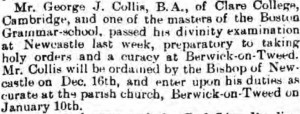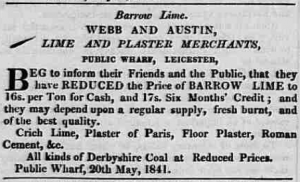After three years service in Berwick Upon Tweed, George moves 40 miles or so southwards along the Northumbrian coastline, to settle as curate of Holy Trinity Church in Embleton village.
He’s following in the footsteps of many notable and literary incumbents in the parish. Most famous of all was the Rev Mandell Creighton, the vicar of Embleton in 1875-1884 who later became Bishop of London. It was whilst at Embleton that Creighton wrote his History of the Papacy, The Life of Sir George Grey, and collected material for the Northumberland County History, of which he was one of the founders.
Creighton’s daily routine provides an insight into the life of a late Victorian clergyman. Each weekday morning, he spends four hours reading in the vicarage library. In the afternoons, he visits – with his wife, when possible – the homes of their parishioners, listening to them, giving advice, offering prayers, conducting services for the housebound, and, on occasion, handing out home-made medical remedies.





